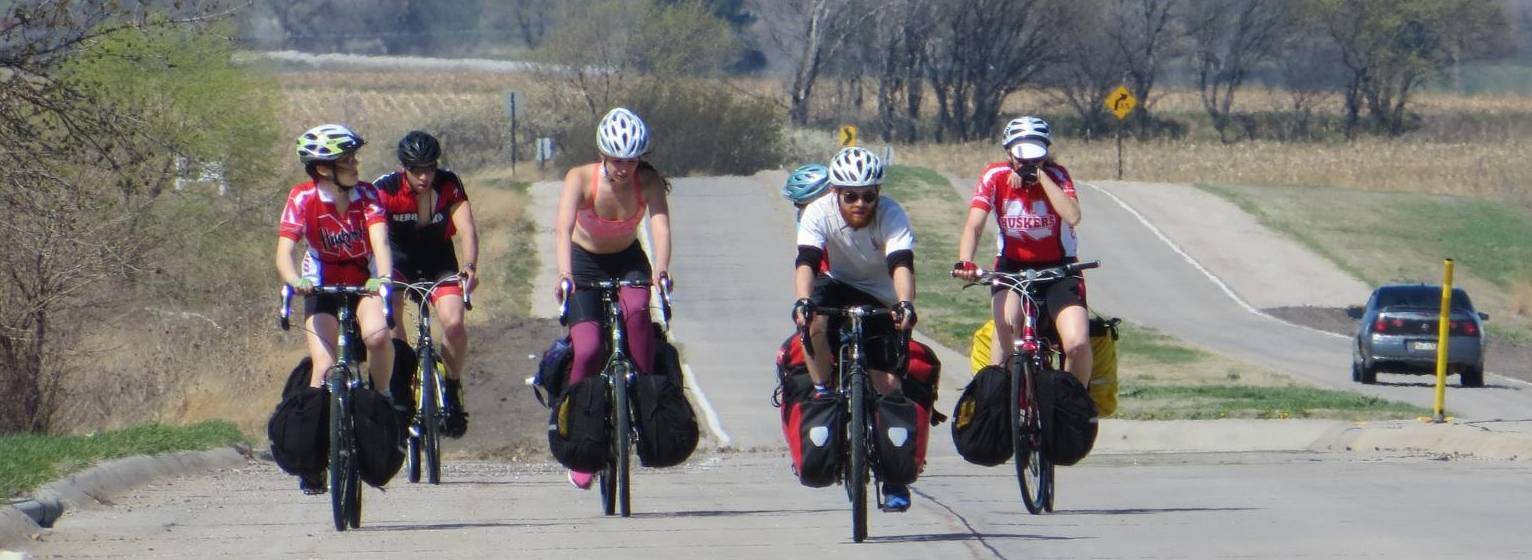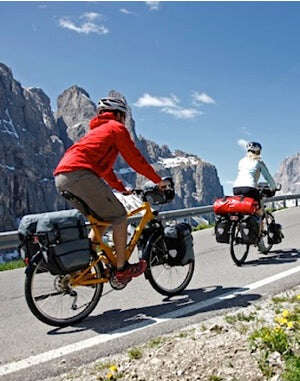
Why You Need a Good Bicycle Touring Pannier
The word pannier, pronounced pan-yay, is French for basket. It is the term given to a bag that is carried on the back or front of a bicycle. The term has its origins in the bicycle touring culture of France in the late 1800s and early 1900s as the average cyclist (which included almost everyone back then) would need to carry supplies such as tools, food, etc., as they would commute over longer distances or just ride to the local market down the street. They were an essential part of everyday transport.
Today, panniers are commonly associated with bicycles used for touring and long-distance riding. When cyclists need to carry more than what they require for short day rides, they will often use panniers to carry clothing, food, sleep kits, tools and other gear and necessary gear to do so.

Touring style panniers are the most common bicycle specific bags available. These bags usually come in pairs and the better versions are designed to be fully waterproof. This ensures that they will withstand long rides in harsh conditions, while protecting what is inside them from the elements. They are built from durable materials that can take prolonged abuse of the wear and tear that is inevitable on multi-day, week, or month trips. The best touring panniers will have solid and adjustable mounting hardware for a secure mount, and still made with lightweight materials that will require less pedal power.
Most of these panniers are designed with utility and durability in mind and made with one main storage compartment with a roll-top and buckle closure that maximizes capacity while keeping all your gear secure and dry in a single weatherproof chamber.
What should I look for before buying a bicycle touring pannier?
The best way to decide which type of pannier is for you is by determining what you will be using it for. If most of your riding is short distance riding, then a small pannier or handlebar bag may work just fine. However, if you plan on pedaling longer distances that will require bringing more necessary gear, then investing in a larger volume, sturdy and waterproof bag will be well worth it and make the trip that much more enjoyable.
What should you look for before you buy a bicycle touring pannier? There are many factors to consider. You will want to have a pannier that is the right size for you, ideally is waterproof, has easy to use clips, and accommodates your needs.
1) Capacity: The initial question is whether it is possible to fit all your stuff in one pannier. To get a definite answer, there are a few factors that need to be taken into consideration. These include the type of bike tour one is going on, what weather conditions will be like and how many days the tour will last for.

What size of pannier will you need? You will also want to make sure that the capacity of the bag is not too small or too large for the application you are intending to use it for.
They come in a variety of size options. Commuter specific bags are smaller and more compact for city usage. Touring pannier bags are often larger with a greater carrying capacity. Most bag volumes are measured in liters. This is an industry standard of bag sizing, but it is not always easy to figure out what this means when determining which volume actually needed.
A good way to visualize size is to take note that the average grocery store paper bag is between 18 to 25 liters in capacity. So, figuring out how much gear you can put into a standard grocery bag will give you an idea of what you will be able to store in your pannier.
2) Compatibility and Style: Depending on the rack you have; panniers can fit in two main locations: next to the rear wheel; on top of the front wheel and next to the front wheel hub. The rear-mounted pannier rack is the most common as it is the most convenient and does not hinder rider movement. Front loaded panniers are often used when more gear is needed. However, they are often smaller bags to help maintain overall bike balance and handling safety. Most bags can be used both on front and rear rack systems.
For a secure attachment to your bike, a good pannier will have sturdy clips that have adjustable placements along a bar. This enables movement of the clips on the bag to accommodate the type of rack you have and be able to place the bag itself forward or backward on the rack. This is very important to ensure you have enough clearance for heals as you pedal. Depending on the size of your frame, a bag that sits too forward on the rack will get in the way, so the ability to adjust placement of the clips is crucial.
You will ride over potholes and go over large bumps along the way, and you certainly do not want the panniers to fall off your bike! To make sure that the pannier stays very secured to the mounting system, it will have adjustable mounting hooks or clips and very importantly, an adjustable lower support hook that will attach to the lower part of the bag to the rack. This will keep things secure and keep the pannier on your bike, no matter what terrain you ride over.
3) Material: Panniers are usually made of fabric infused or lined with nylon or some sort of plastic for rigidity. They are usually enclosed around a metal or sturdy plastic frame with clips or buckles on their back to enable them to be attached to a bike rack.
For most tourers, waterproof panniers are preferred. These bags are usually made of tarpaulin or PVC. The seams and joints are welded to make them resistant to water entry and able to withstand any outdoor element. The best panniers in the market are made with tear-proof and wear-proof PVC materials with sealed seams, often using the same ‘roll-top’ closure system found in drybags for paddle sports.
In planning your tours, keeping these three general elements in mind when choosing a pannier will make your decision in buying the perfect panniers for your needs, a lot easier.
Gear up with a good pannier system and get out there, adventure awaits!
Getting the right panniers for your bike tour can literally make the difference between a great, unforgettable ride or a nightmare you will want to forget. Its worth thinking this through carefully.

Considering the amount and size of what you need to bring and matching that to the volume size of the bags required, making sure all is well balanced on the bike to ensure good handling, the terrain, and elements you will be riding through all need to be done.
Panniers are essential for all bicycle tourers and a quality bag will last you years of use. For a high-quality model that checks all these boxes and has proven to be a well-respected option across North America and Europe, consider the 18-25L ERRO panniers.
These are our favorites panniers for durability and price and look great!
Leave a comment
Your email address will not be published..